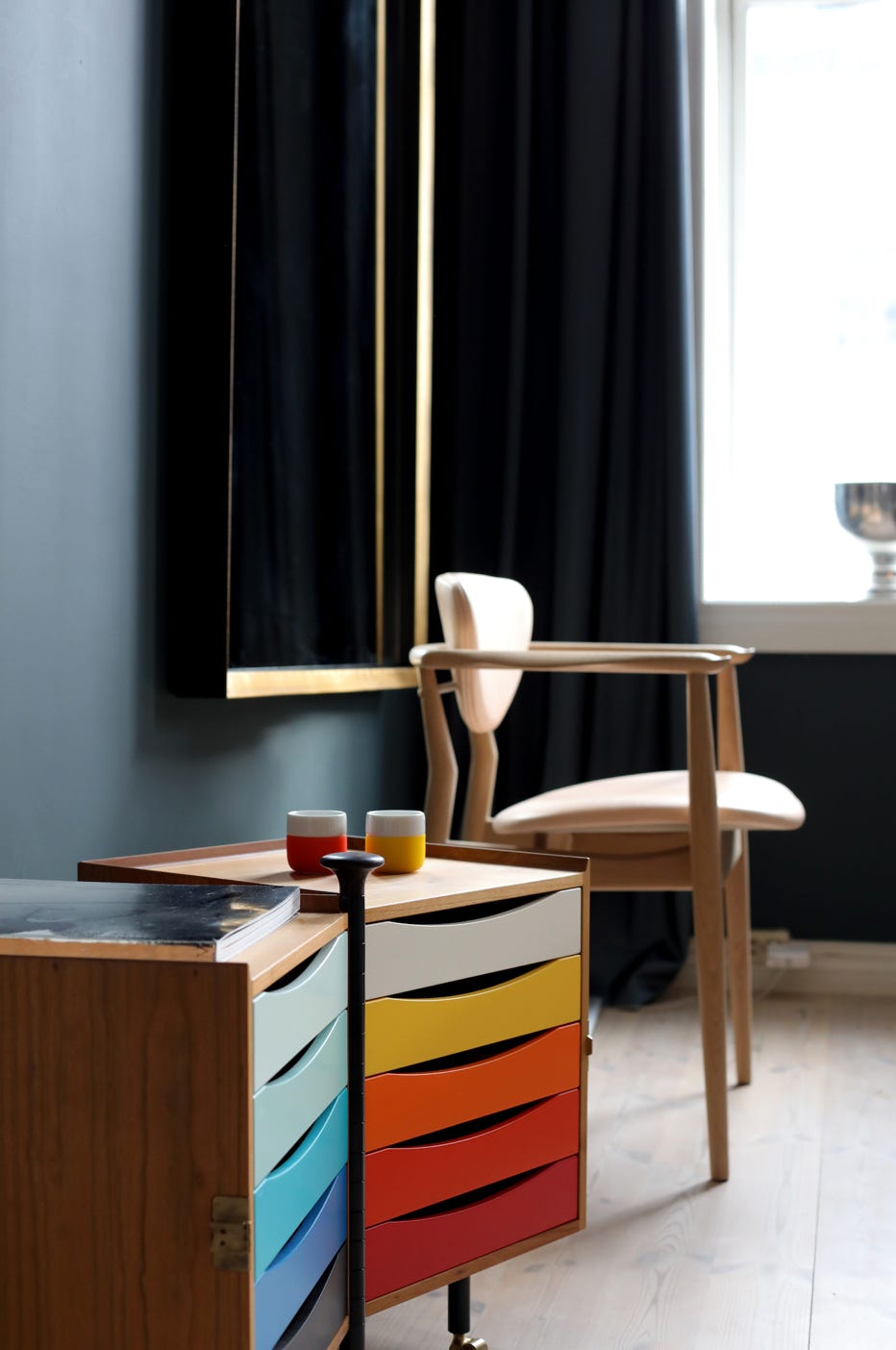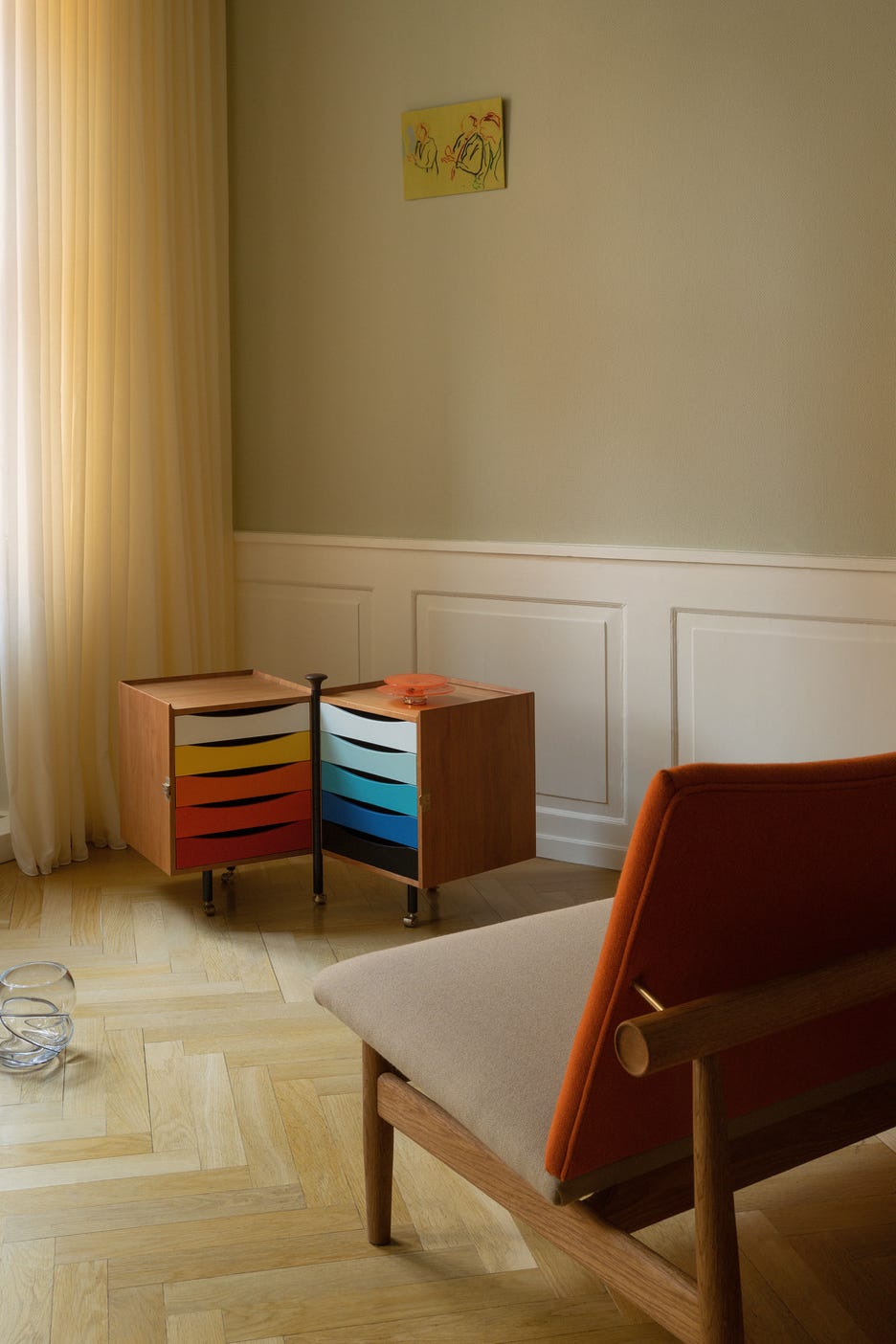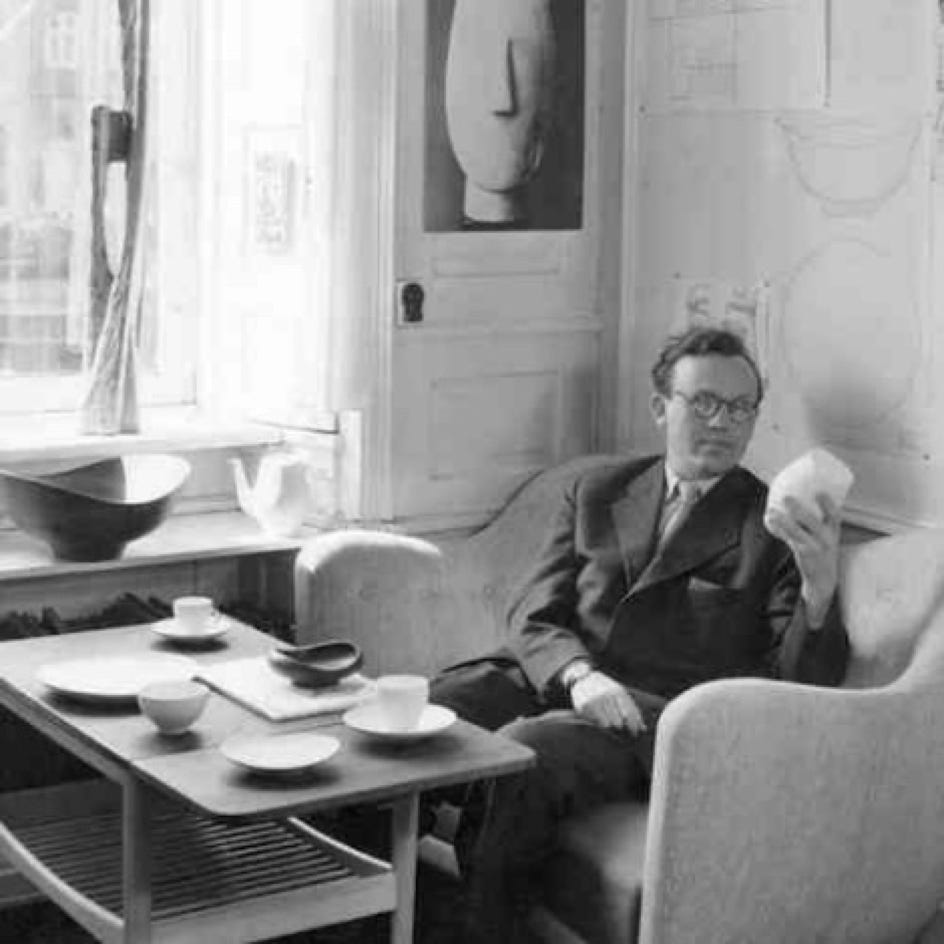15% off with DESIGN15


The Glove cabinet was designed by Finn Juhl for his wife, Hanne Wilhelm Hansen, to elegantly store her glove collection. It was presented by Ludwig Pontoppidan at the 1961 Cabinetmakers' Guild exhibition, as part of a collection of bedroom furniture. It is made from exclusive Japanese cherry, with drawers painted in Finn Juhl's range of warm and cool colours. The wardrobe is supported by burnished steel legs finished with brass wheels and fittings.
The exclusive cabinet opens like a jewellery box to reveal a bold, colourful interior.
With his artistic approach to design, Finn Juhl was one of the few to master both functionality and delicate detail. His designs have withstood the test of time extraordinarily well, and although women no longer wear gloves as they did in the 1960s, his reinvention of the traditional chest of drawers is still as seductive more than 60 years after its creation.
The delicate glove cabinet can still be found in Finn Juhl's home in Ordrup, north of Copenhagen.
Materials solid Japanese cherry with wenge knob - wooden drawers painted in 2 warm and cool colours - burnished steel legs - brass castors and fittings
Dimensions 69 x 34 x H51 cm
Glove cabinet

As a teenager, Finn Juhl (1912-1989) wanted to become an art historian after having been fascinated by fine arts since childhood. His father prevented him from doing so and he studied architecture. Later, once his reputation as a furniture designer had been acquired, he would speak of himself as a self-taught man, certainly in reference to this thwarted vocation which forced him to make his intellectual journey alone. His very singular style owes much to this non-linear trajectory, with a very unacademic interpretation of art visible in his work. Finn Juhl began his studies in 1930, a key period that saw the birth of modern design and furniture.
His ultra-modern offices in the center of Copenhagen greeted visitors with a huge Japanese paper fish, a symbol of imagination. And rather than approaching furniture design from a functional, classical perspective, Finn Juhl approached his work as a sculptor. He sought beauty in volume and form, life and expressiveness. An approach that in the 1940's and 1950's was totally unprecedented. For Finn Juhl, it was clear that a piece of furniture could not be limited to a function, but also had to express an artistic sensibility.
While he remains world-famous for his furniture, Finn Juhl also designed several interior architecture projects and a few industrial products, including IBM typewriters. His greatest commercial success was with the Baker Company in the United States, which allowed him to mass-produce several pieces of furniture.
As an architect, he is known for the interior design of the United Nations Council in New York.